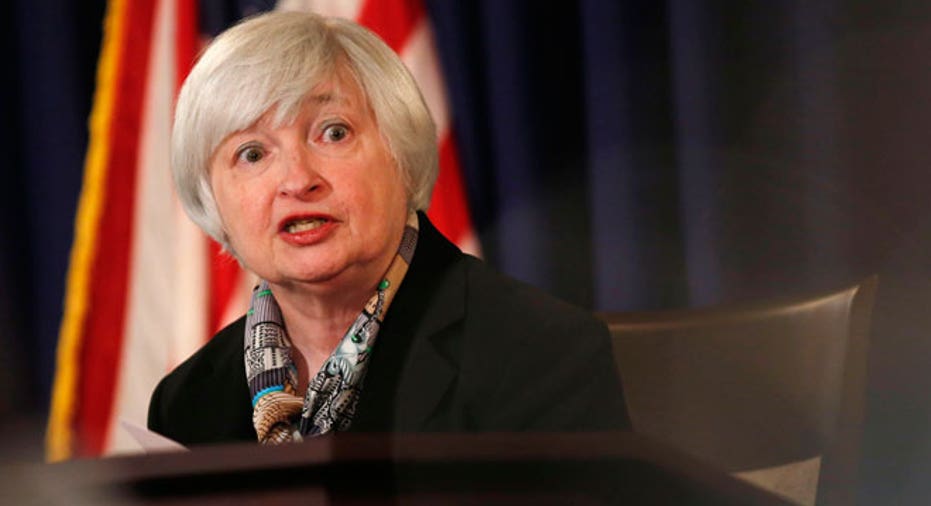Federal Reserve Leaves Rates Unchanged After January Meeting

With an eye toward recent global market turbulence, the Federal Reserve on Wednesday left interest rates alone while acknowledging the rough start to 2016 and offering assurances that interest rates probably won't be moving any higher any time soon.
"The Committee is closely monitoring global economic and financial developments and is assessing their implications for the labor market and inflation, and for the balance of risks to the outlook," the Fed said in its statement released at the end of two days of meetings.
The policy-setting Federal Open Market Committee left rates at the 0.25%-0.50% range, where they were lifted in December -- the first rate increase in nearly a decade. Since the first of the year, global markets have been roiled by a number of factors but primarily by fears that China's economy is slowing and uncertainty over plunging oil prices. Mixed-at-best but generally tepid U.S. economic data hasn't helped.
"The Fed is nowhere close to raising interest rates for a second time in such a turbulent market," said Greg McBride, Bankrate.com's chief financial analyst. "The Federal Reserve wants time to evaluate the pace of economic growth just to make sure it is consistent with an uneven pace of growth and not the beginning of a broader slowdown."
The U.S. stock market is off to its worst start of a new year ever, with all three major indexes -- the Dow Jones Industrial Average, the S&P 500 and the Nasdaq -- falling into correction territory during recent sessions.
Given all that mayhem, investors were looking for the Fed to reassure markets that borrowing costs aren't likely to be headed higher in the near future. So the decision anounced Wednesday to keep rates where they are was widely expected.
The Fed added some fairly dovish sentiment for additional reassurance: "The Committee expects that economic conditions will evolve in a manner that will warrant only gradual increases in the federal funds rate; the federal funds rate is likely to remain, for some time, below levels that are expected to prevail in the longer run."
"[The] Fed left rates unchanged as expected. The real story is surrounding their 'message to the markets' in which they needed to walk a fine line between confirming their confidence in the U.S. economic recovery but still letting the markets know they are cognizant of the fragile state of the global economy. This message seems to have accomplished just what they needed to do," said Chris Gaffney, president of World Markets at EverBank.
The December increase was a tiny bump but highly symbolic in that it represented a definitive move away from the years of easy money policies initiated in the wake of the 2008 financial crisis. However, Fed policy makers last month painted a relatively rosy picture of 2016 in their forecasts, and that hasn't played out so far.
The Fed in justifying the December liftoff predicted that a strengthening labor market would start to push wages higher, which would in turn lift inflation toward the Fed's 2% target. That may still pan out, but the December jobs report, despite strong job creation numbers, showed almost no gain in average hourly wages. Wage growth has been stubbornly weak notwithstanding recent months' job gains averaging well over 200,000. The unemployment rate -- 5% -- is currently at a seven-and-a-half year low.
Meanwhile, inflation refuses to adhere to the Fed's predictions. Core inflation has risen just 1.5% from a year ago, materially below the Fed's target. So despite the Fed's best efforts to bump inflation higher by means of massive stimulus and seven years of near-zero interest rates, the U.S. economy is showing no signs of complying.
The Fed conceded the vexing inflation situation on Wednesday: "In light of the current shortfall of inflation from 2 percent, the Committee will carefully monitor actual and expected progress toward its inflation goal."



















